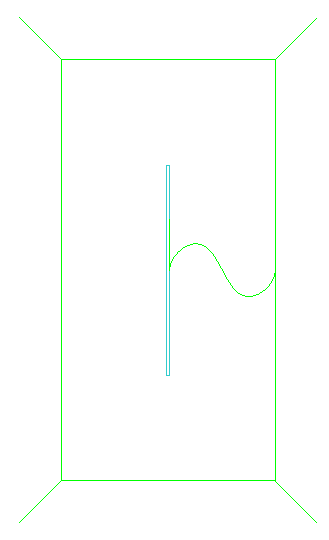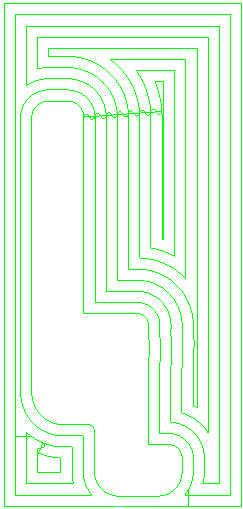Pocket Style
Complete the parameters to clean all of the areas.
Area Clearance – a drop down menu will display more options. These options will react in different ways on how the extra stock will be removed.


 Expanded – this option will start at the center of the part and work its way to the outside using a maximum width of cut.
Expanded – this option will start at the center of the part and work its way to the outside using a maximum width of cut.
 Contract – this option will start at the outside of the part and work its way inboard to the center using the maximum width of cut.
Contract – this option will start at the outside of the part and work its way inboard to the center using the maximum width of cut.
 Zig Zag – in this option the user can go back and forth in a straight line to clear out all stock. When selected, the menu options will change to set an angle and the direction to step over.
Zig Zag – in this option the user can go back and forth in a straight line to clear out all stock. When selected, the menu options will change to set an angle and the direction to step over.

Tool Path Angle - allows the user to set whatever angle wanted to complete the job. The angle starts at the 3:00 o’clock position which would be 0.0000 and goes counter clockwise to the 9:00 o’clock position which will be 180.0000.

Stepover Direction –determines which way the cutter will step. Another window will display the direction the tool will step over. The arrows on the line will determine the direction the tool will travel. By selecting Left or Right it will change the direction of the arrows to show its new direction. If the Tool Path Angle is changed the line will change to show the true angle of the tool.
 Zig Zag One Way – this option is similar to Zig Zag but will only cut in one direction. In the diagram the blue lines are rapids back to the beginning of the cut.
Zig Zag One Way – this option is similar to Zig Zag but will only cut in one direction. In the diagram the blue lines are rapids back to the beginning of the cut.
No Lift Expanded – similar to the expanded but it will not lift off the steel to go to the next area to cut. It will clean up all areas before continuing to the next. In the diagram below the no lift expanded has no rapid moves, while the expanded does. The rapid moves are the blue dotted lines.
 Expanded
Expanded  Expanded No Lift
Expanded No Lift
No Lift Contract – similar to No Lift Expanded but will start at the outside of the part and work its way to the center by the maximum width of cut.
Corner Clearance –Normal, Loops, and Rabbit Ears are three different options. This lets the software know which way to clean out the corners. Each is shown in the diagrams below.
 Normal
Normal Loops
Loops Rabbit Ears
Rabbit Ears
Transition – there are two different transitions which means going from one lap to the other. The two transitions are direct and smooth as shown in the diagram below.
 Direct
Direct Smooth
Smooth